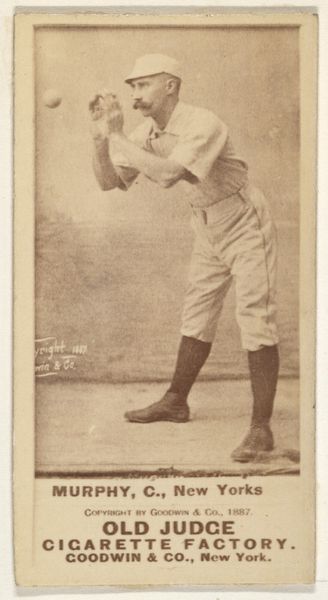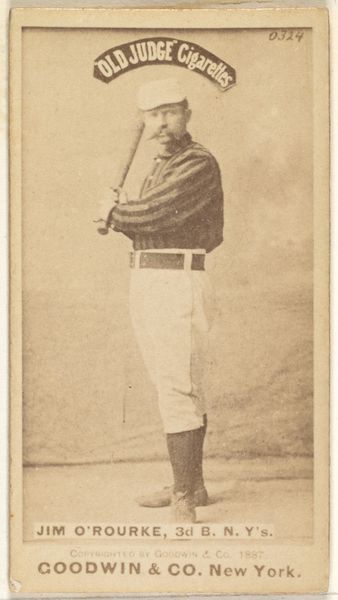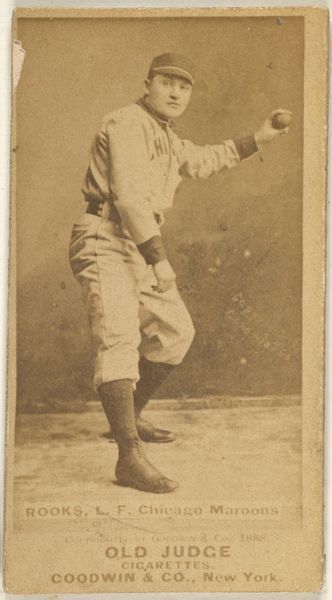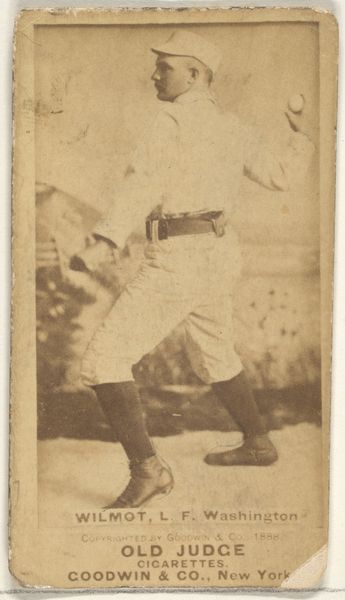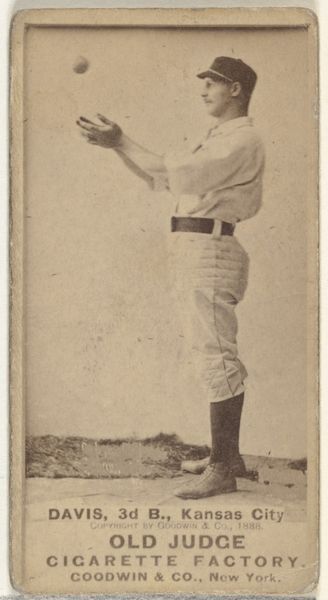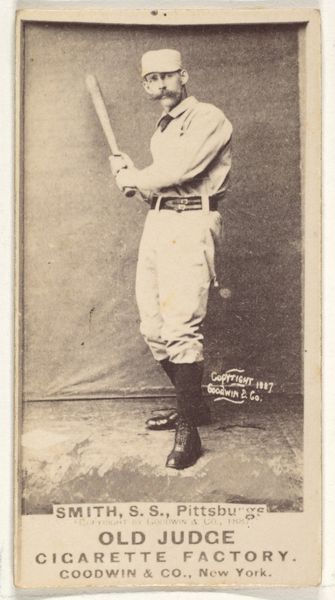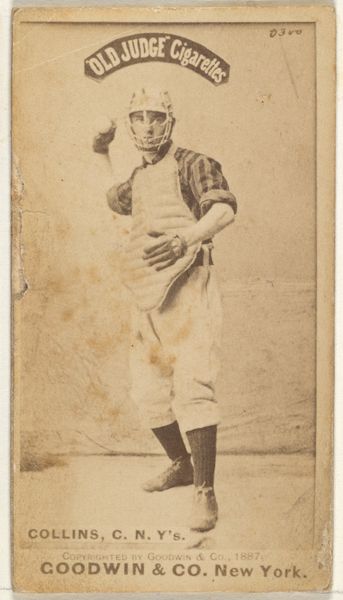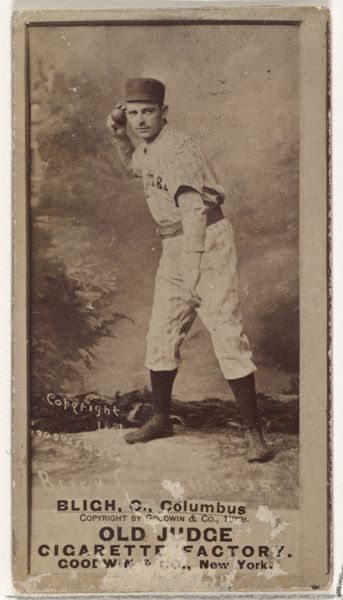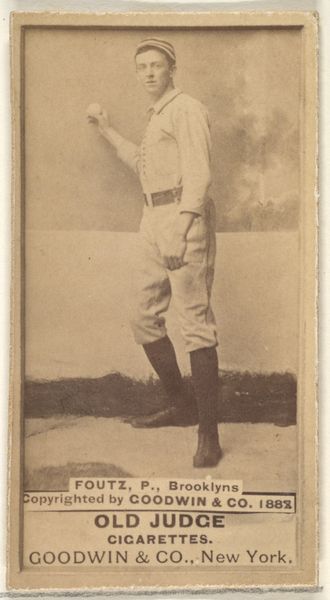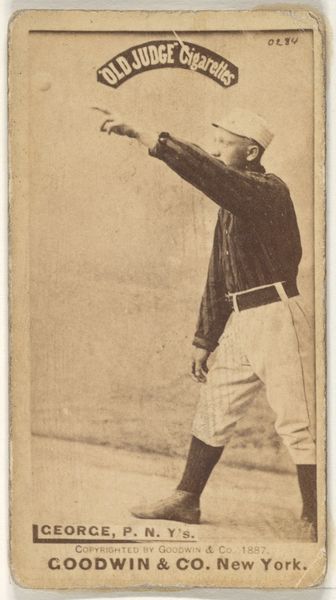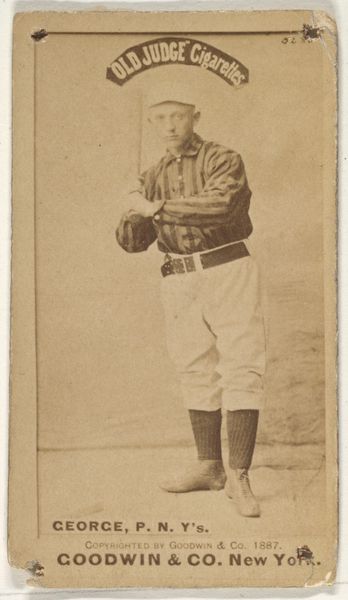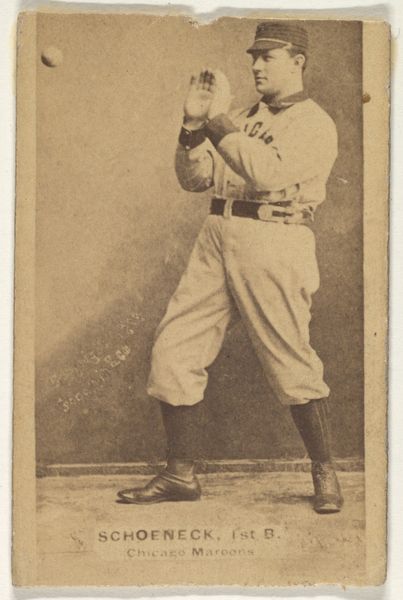
James Henry O'Rourke, 3rd Base, New York, from the Old Judge series (N172) for Old Judge Cigarettes 1887
0:00
0:00
drawing, print, photography, albumen-print
#
portrait
#
drawing
# print
#
baseball
#
photography
#
men
#
athlete
#
albumen-print
Dimensions: sheet: 2 11/16 x 1 3/8 in. (6.9 x 3.5 cm)
Copyright: Public Domain
Editor: Here we have an albumen print from 1887 featuring James Henry O'Rourke, a third baseman for the New York team. It's part of the "Old Judge" series. I find the sepia tones and the small size quite intimate, but it’s also a bit odd seeing a baseball player used to sell cigarettes. What layers do you see at play here? Curator: It's critical to consider the confluence of commerce, sport, and identity construction. Think about how images like these circulated. They weren't just promoting cigarettes; they were crafting narratives around masculinity, athleticism, and American ideals. These "Old Judge" cards placed athletes on the same plane as actors, politicians and other public figures, implicitly shaping our perception of heroism and role models, often reinforcing the social hierarchies of the time. Editor: So, it's not just a baseball card, but a tool for shaping social perceptions? Curator: Exactly. And who was included, and excluded, from these narratives matters. This photograph also reflects how sports were becoming increasingly professionalized and commercialized. Ask yourself how the promotion of tobacco, closely associated with ideas of rugged masculinity, played a part in reinforcing certain gender norms. Whose version of ‘masculinity’ does this idealized version of an athlete bolster and what are the historical effects? Editor: It's interesting to consider how an image initially seen as simple advertisement is steeped in social meaning and messaging about power. Curator: Right! This single image can launch us into examining ideas of gender, labor, and capitalism in late 19th-century America. It prompts us to reflect on how similar image economies shape our own cultural landscape.
Comments
No comments
Be the first to comment and join the conversation on the ultimate creative platform.
